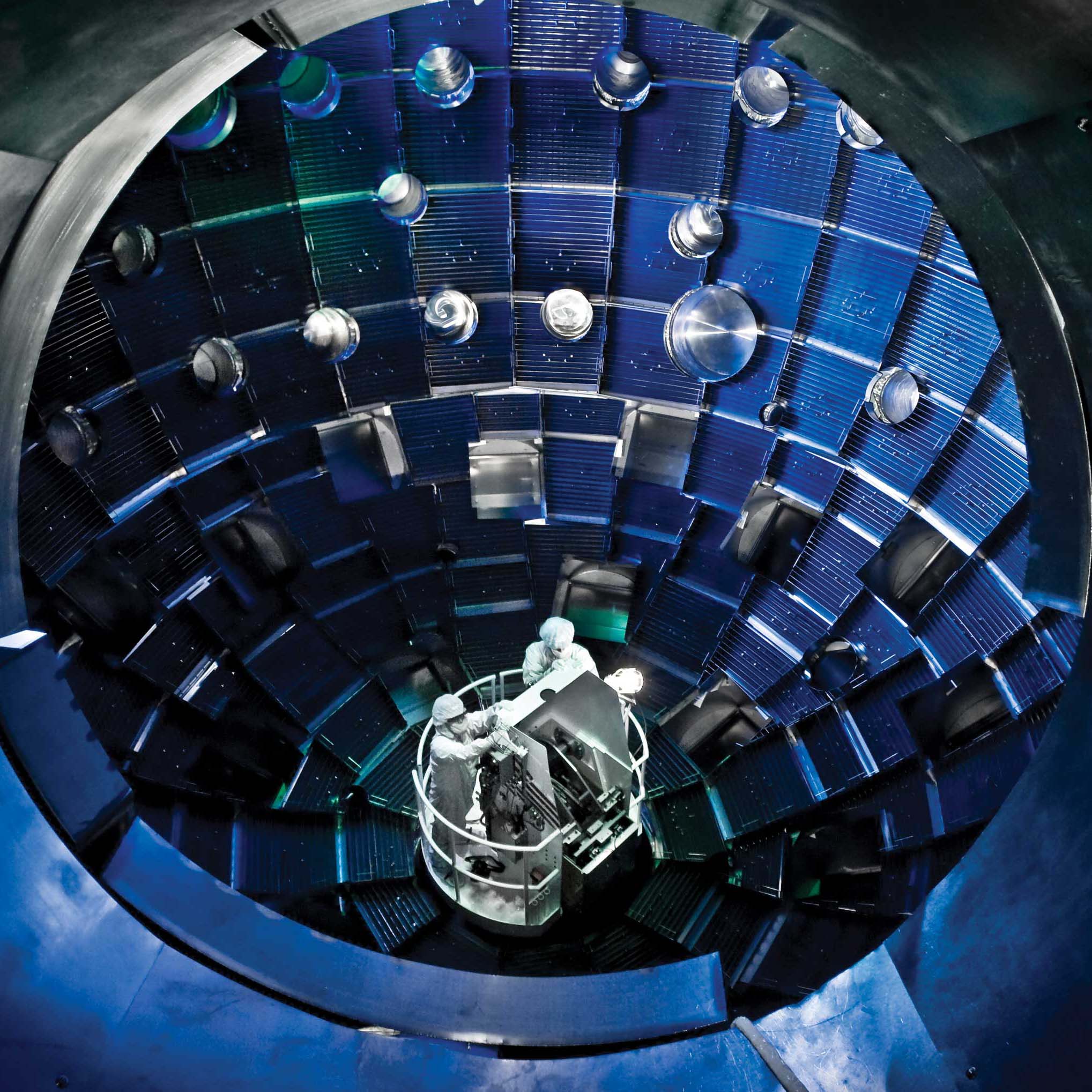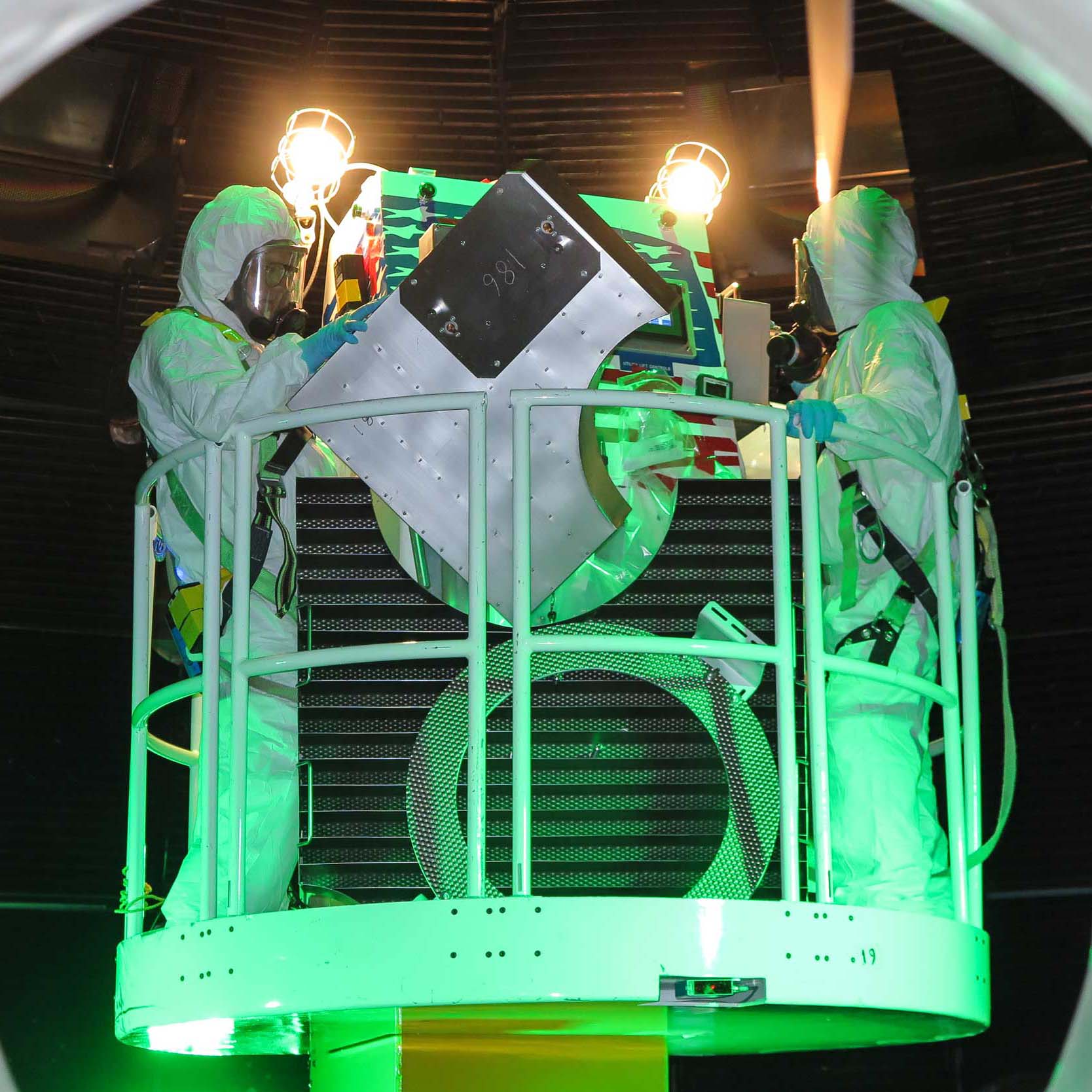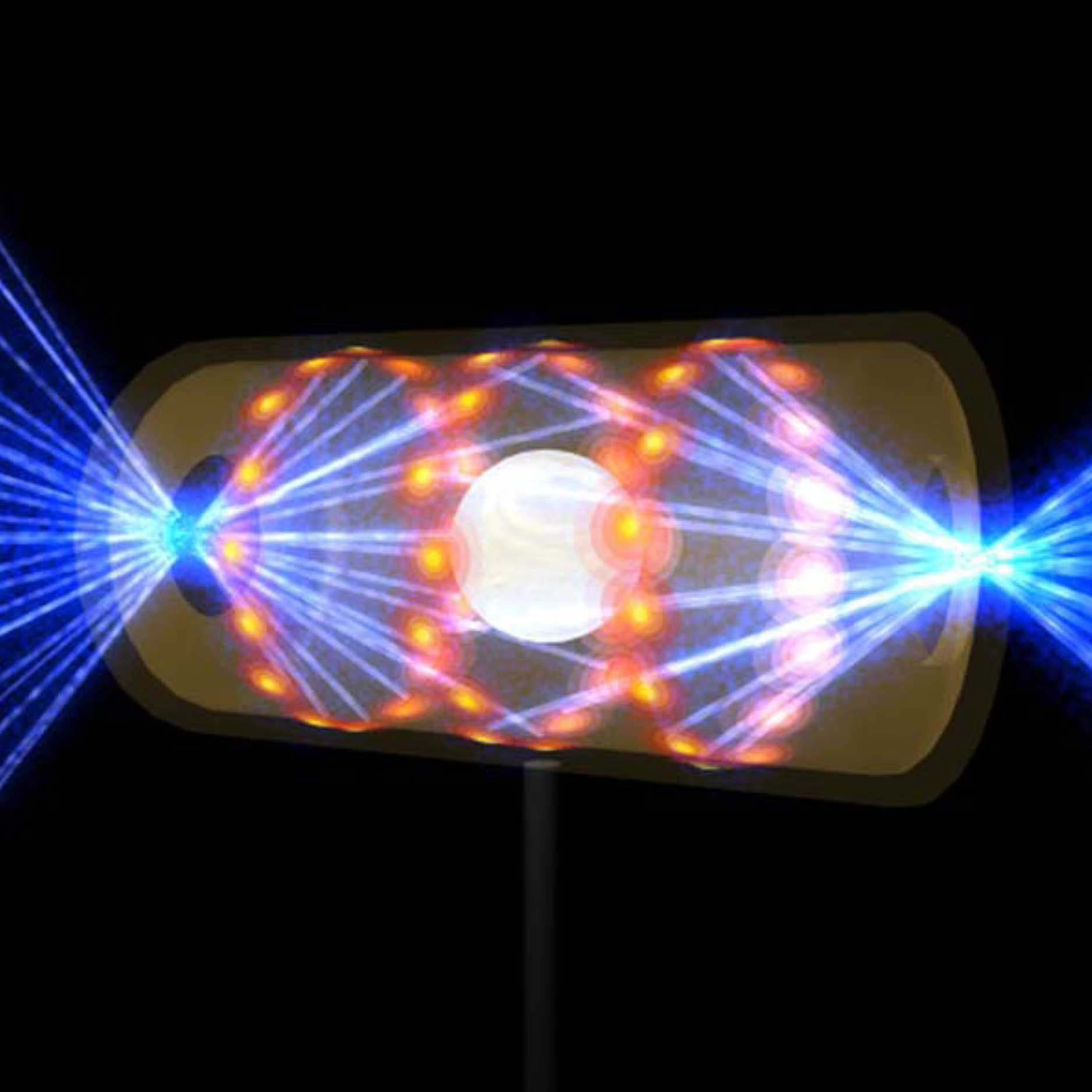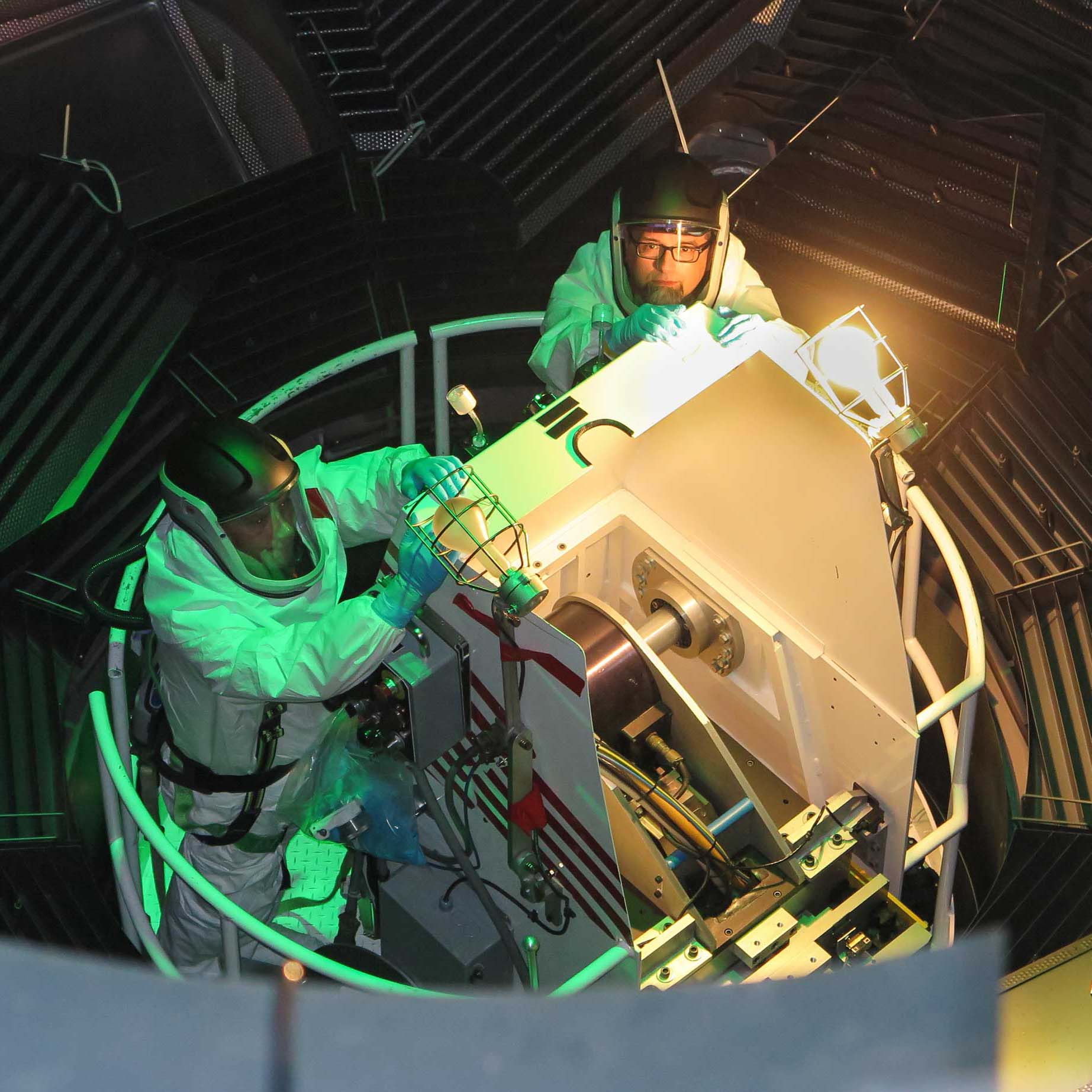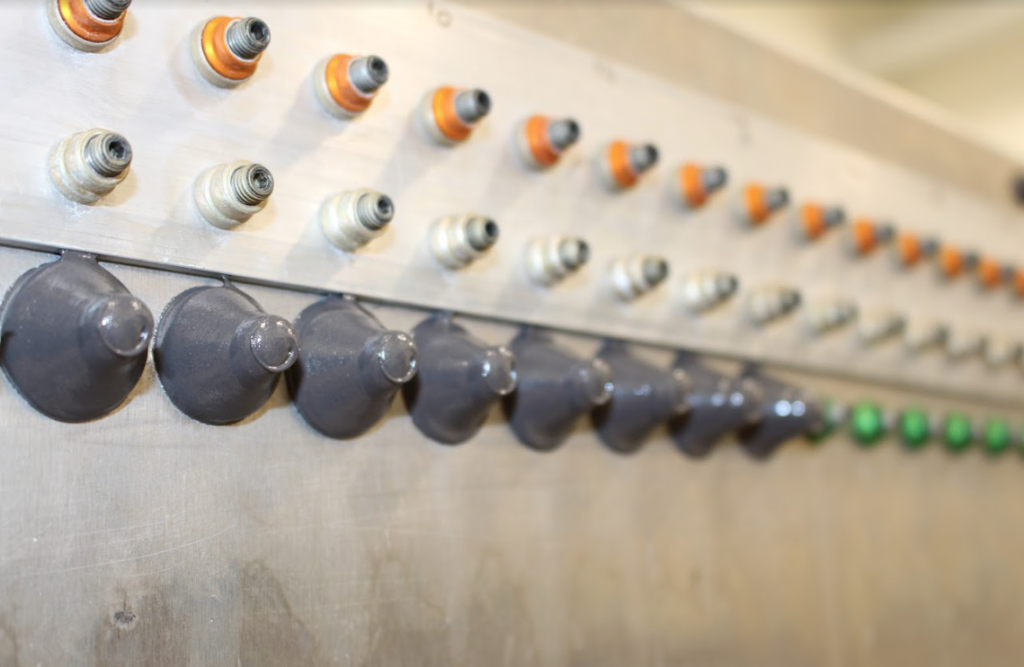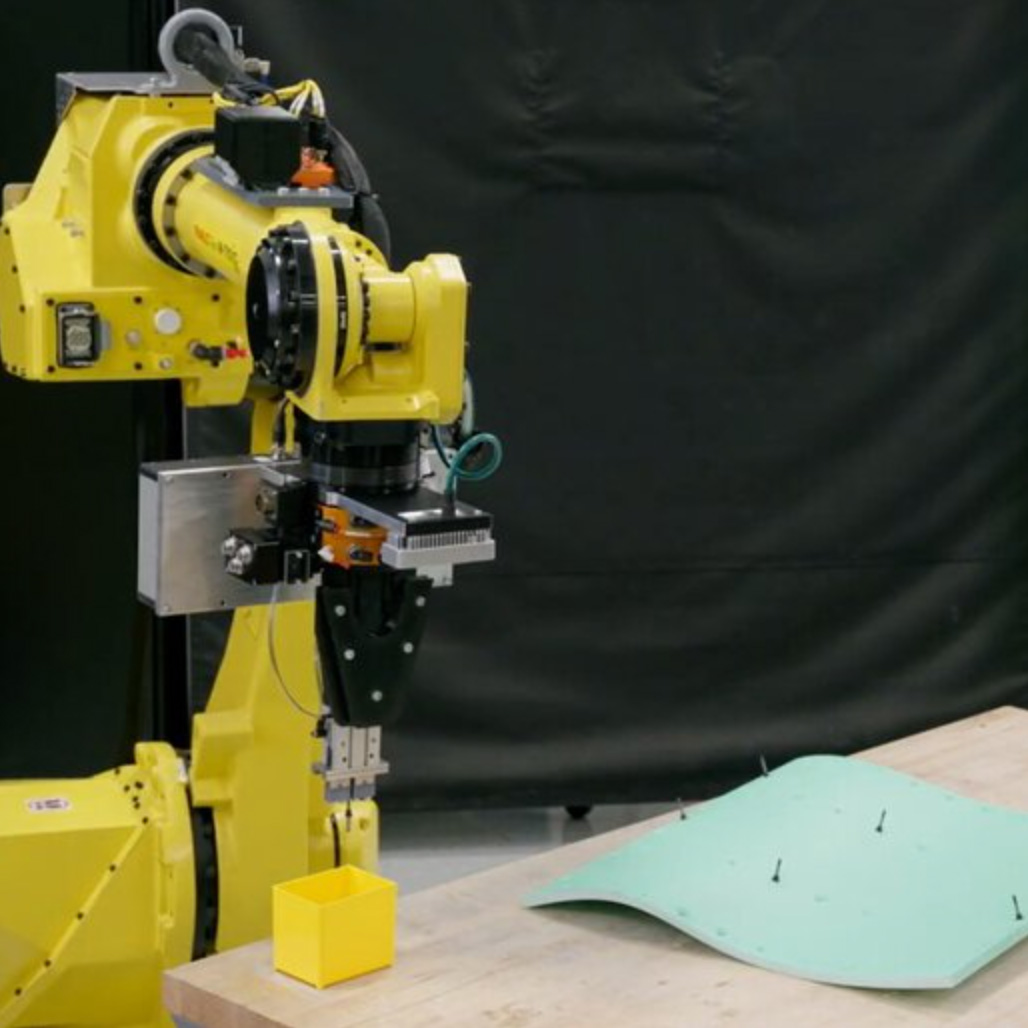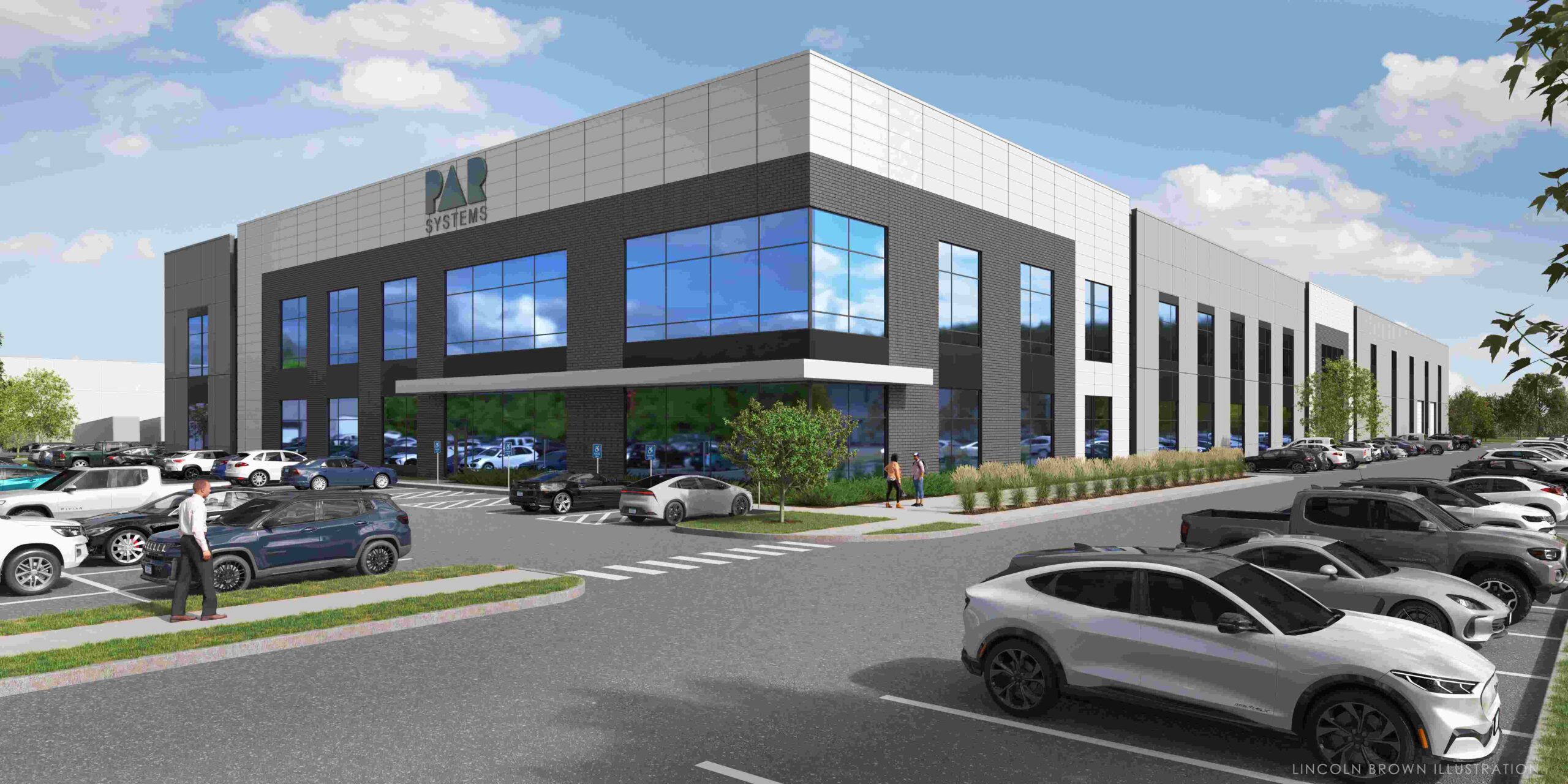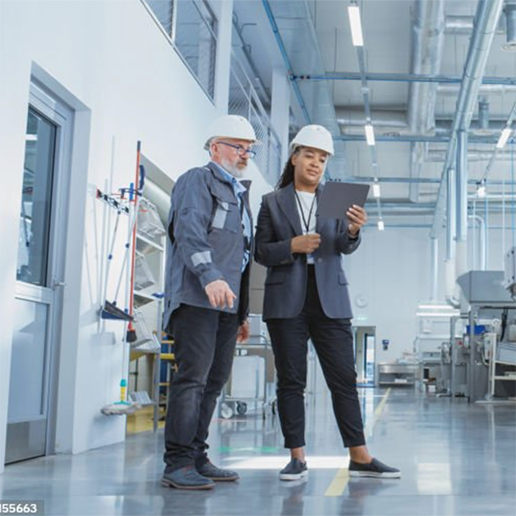PAR Contributes to Nuclear Fusion Breakthrough
The US Department of Energy’s (DOE) Lawrence Livermore National Lab (LLNL) made history by achieving a net energy gain in a nuclear fusion energy experiment. By focusing 192 lasers on a fuel target, two hydrogen atoms were fused into helium, and the amount of energy released in the process was more than it took to start the reaction. This breakthrough will change the future of clean energy and could one day help curb climate change.
PAR Systems developed the Target Chamber Service System Lift that is used to clean the mirrors and perform maintenance inside the target chamber at the National Ignition Facility (NIF). Maintenance of these mirrors is critical as they focus lasers to the single focal point needed to create enough heat for fusion to occur. To reach all points within the sphere this mast can rotate and telescope out in any direction.
PAR’s equipment can be seen in the photo above. The Boom Lift Basket is on a mast that can rotate and telescope out in any direction allowing personnel to be within 36 inches of any point in the sphere. The intuitive control system allows operators to maneuver around the 5 meter chamber radius safely and efficiently. Visit our nuclear industry page to learn more about our industry leading capabilities in nuclear applications.
This is one of those moon landing kind of events. It can’t be emphasized enough how big of a deal this is.
What is nuclear fusion energy?
Fusion is the process that powers the sun and the stars. It happens when two light atoms (such as hydrogen) combine, or fuse, to form a heavier atom (helium) and release more energy than was used to create the reaction. Lighter elements, like hydrogen and helium, are generally more fusible while heavier elements, like uranium, are more fissionable.
For fusion to work the hydrogen atoms must be heated to very high temperatures of 100 million degrees Celsius (180 million Fahrenheit) and be held together long enough for fusion to occur- a force provided by gravity in the sun and the stars. On earth, LLNL is attempting to create fusion energy using inertial confinement, where a target pellet of frozen hydrogen is heated by intense amount of energy from lasers. The process happens so quickly that fusion occurs before the atoms fly apart. Other methods being explored include magnetic confinement, where magnetic fields hold atoms together while they are heated by energy sources such as microwaves.
Is fission or fusion more environmentally friendly?
Both fission and fusion are nuclear processes that produce zero-emission clean energy, but the processes are very different. Fission occurs when a reactor shoots a neutron into an atom of uranium, splitting into two smaller atoms. This generates heat to produce steam, which is used by a turbine generator to generate electricity. Fission is the type of nuclear energy used to make energy today, which runs the risk of a runaway reaction like a nuclear meltdown and creates long-lasting radioactive waste that needs to be stored.
Fusion has environmental benefits over fission- while it is a nuclear process, the products of fusion (helium and a neutron) are not radioactive and produce no radioactive waste. Also, if something goes wrong with the fusion reactor it will simply stop, eliminating the risk of a nuclear meltdown. Ordinary water can provide the hydrogen needed for fusion, giving a gallon of water the energy content of 300 gallons of gasoline. Fusion has the potential to be an inexhaustible source of energy.
